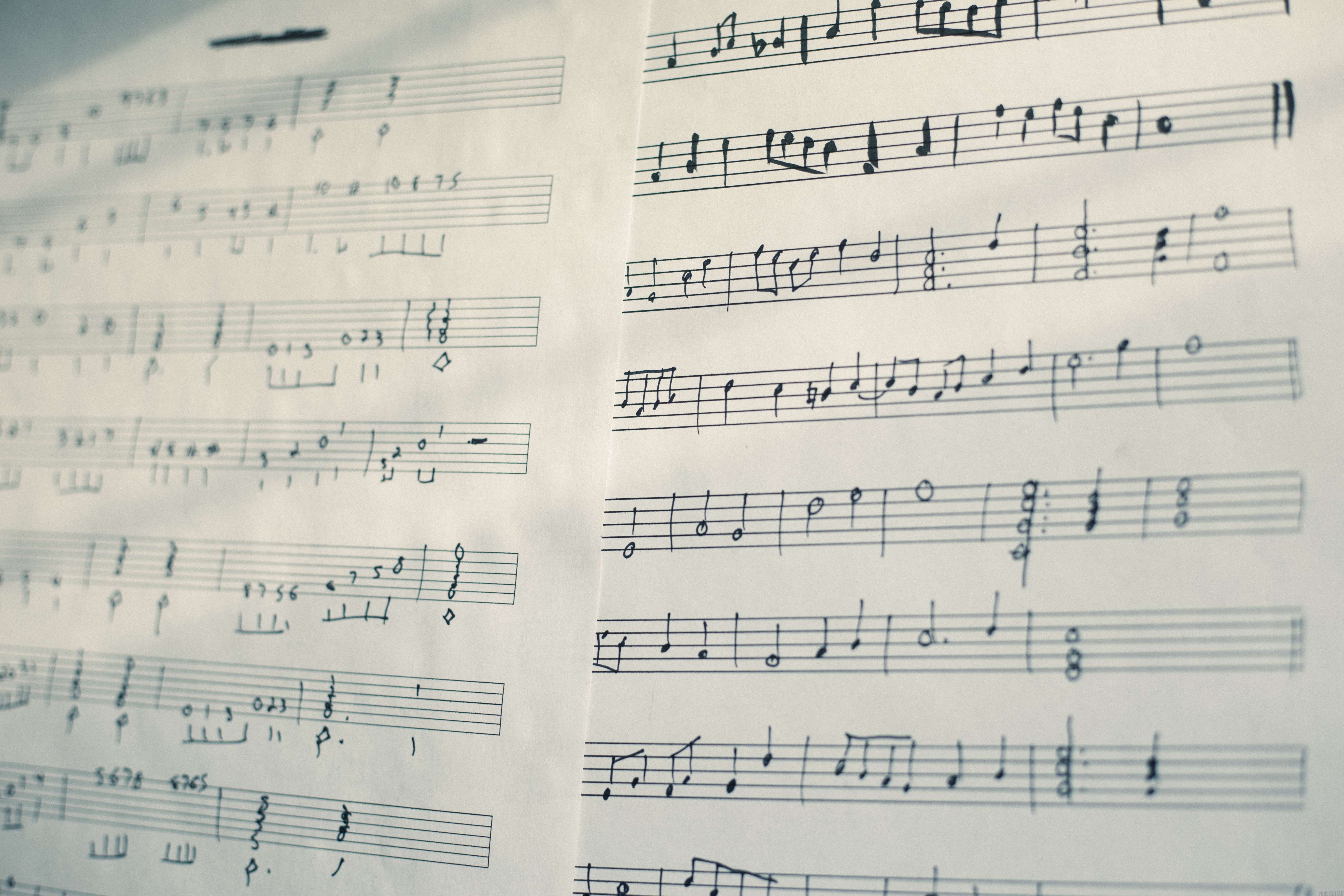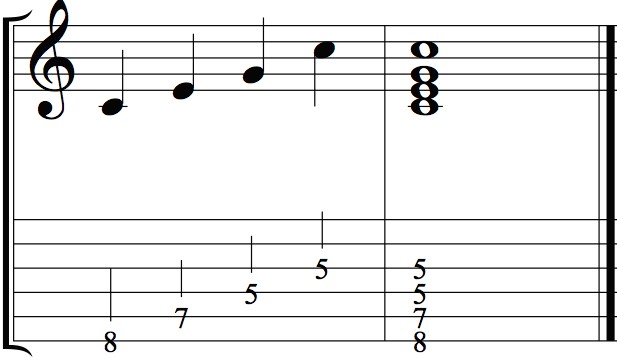Should You Learn Tablature or Music Notation?

Photo by Hub Guitar
Short Answer
Probably both.
Long Answer
While guitar tablature and standard music notation both have their merits and shortcomings, comparing the two with each other creates the misleading impression that one is supposed to exist without the other. Amateur musicians sometimes dismiss the merits of music notation the way the fox downplayed the sour grapes; but there are also snobs who look down on guitar tablature, wishing instead to be recognized for their proficiency in learning the formal musical notation system.
Guitar Tablature
Guitar tablature has unique benefits that music notation does not have. Tab can be used to guide the learner in playing a musical part exactly how it was originally played. Tab can show you which frets to play on what strings, and how to pluck the notes. This is very helpful when learning guitar. While beginners are able to learn to sight read, many prefer the quick start offered by tablature. If you can find a decent tab for a song you’ve heard many times, the mere act of beginning to put your fingers on the specific frets used in the song can give you the kick-start you need to figure out how to play the song quickly.
Guitar tablature is unique because not every instrument has its own highly-developed system of notating specific fingerings and techniques. Many instrumentalists read standard notation, although standard notation often includes special markings for the instrumentalist. However, this means beginners are on their own when learning the basic technique of their instrument. Guitar tab bypasses this by showing the learner specifically how to play a tune.

Bottom: tablature, with rhythm notation added. Top: standard notation.
Tablature is not without its shortcomings, however. In principle, one could properly and accurately notate music using only guitar tablature. However, in practice most tabs are “crowdsourced” and many of them are not very accurate. In addition, although rhythms can by written in tab, it is fairly uncommon because most people who read and write tab lack the training needed to understand written rhythm notation. When rhythm notation is added to tablature, it is the same system of formal rhythm notation used in standard music notation.

The first measure is an arpeggio. For those trained in reading music, the standard notation (top) shows this clearly. The tab (bottom) is not as good at communicating some of this information.
In addition, learning music only by tab tends to obscure the musical relationships between the notes, chords and arpeggios that make up the music. In the long-term this can hinder the learner’s ability to actually understand music and why it works. The fact that rhythms are often absent in practice also weakens the understanding of rhythm. It is common for students to play the wrong rhythm when they use tab to learn.
Standard Music Notation
Learning standard notation is important for anybody who is serious about understanding the music. Especially for players who end up working professionally, standard notation is essential. Without it, you can easily end up in an embarrassing situation. There are numerous contexts in which you are expected to be able to read music notation. Teaching music, performing at a resort or on a cruise ship, or recording music for film are just a few examples.
But most people don’t learn music so they can become professionals. What’s in it for them?
Learning standard notation helps you to see the relationships between notes, chords, scales, and arpeggios. For instance, three notes moving up by consecutive thirds clearly reveals an arpeggioA chord whose notes are played in succession, as if it were part of a melody, as opposed to all together in harmony., something which you might not see if looking at tab. The meaning of the notes and their relationships to the harmony is also emphasized. An E written in the melody, with a Cmaj7 chord in the harmony, shows clearly enough that the melody has the third of the chord. Over time, familiarity with this system will result in deeper understanding of the nature and meaning of music.
Playing standard notation also means that you’ll have learned a standardized system used all over the world. You can easily play parts that were originally intended for other instruments such as violin or piano. And you’'ll have access to hundreds of years worth of music. When you’ve reached a high enough level of proficiency at reading standard notation, you will be able to sit down in front of an unfamiliar sheet of music, and hear yourself play brand new music that you’ve never heard before. It’s quite a thrill.
Coda
Don’t choose one method of written music at the expense of another. Both systems are available to you. You can even create your own informal system of notation to remember guitar parts that you’ve learned. Even if you don’t view mastering sight-reading as a high priority, consider making it a part of your practice routine.
 As the creator of Hub Guitar, Grey has compiled hundreds of guitar lessons, written several books, and filmed hundreds of video lessons. He teaches private lessons in his Boston studio, as well as via video chat through TakeLessons.
As the creator of Hub Guitar, Grey has compiled hundreds of guitar lessons, written several books, and filmed hundreds of video lessons. He teaches private lessons in his Boston studio, as well as via video chat through TakeLessons.